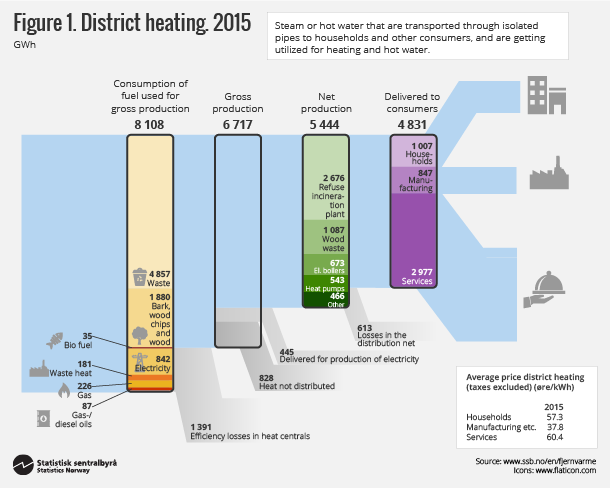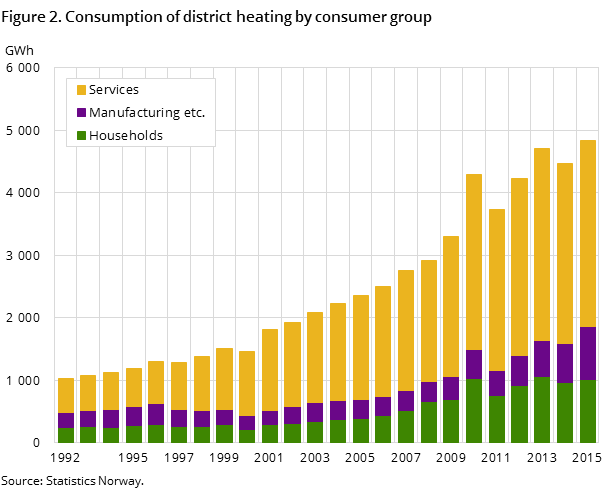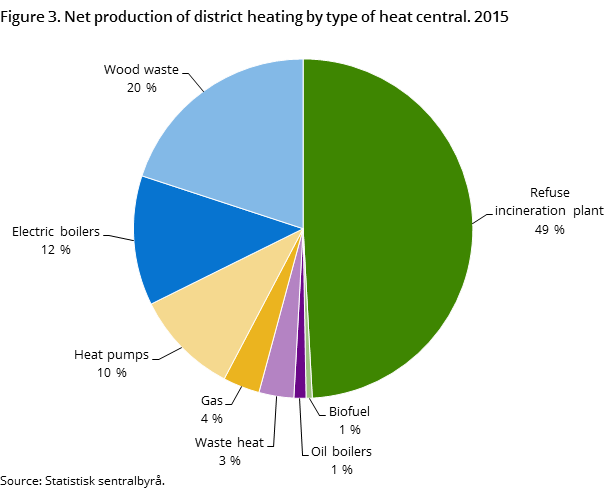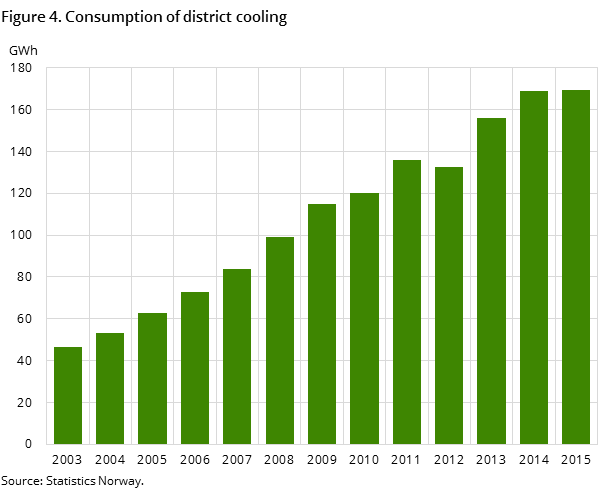Content
Published:
This is an archived release.
Record high district heating consumption
District heating consumption increased by 8 per cent in 2015 compared to the year before and amounted to a record high 4.8 TWh. Although 2015 was 1.8 degrees above normal, the further expansion of the district heating net has pushed up consumption.
| 2015 | Share in per cent | Per cent change compared to last year | |
|---|---|---|---|
| District heating delivered to cunsumer (GWh) | 4 831 | 100.0 | 8.3 |
| ¬ Households | 1 007 | 20.8 | 4.1 |
| ¬ Manufacturing etc. | 847 | 17.5 | 37.5 |
| ¬ Services | 2 977 | 61.6 | 3.4 |
| Average price district heating (taxes excluded) (øre/kWh) | 58.0 | -0.9 | |
| Total investments (1 000 NOK) | 1 481 574 | 1.0 |
In 2015, the total length of the district heating net was about 1 800 km – twice that of 2008.
In addition to district heating, some of the plants supply district cooling. Consumption of district cooling came to 169 GWh in 2015; the same as the year before.
Half of district heating is generated from waste
Waste incineration is the main energy source for district heating. In 2015, about 50 per cent of district heating, or 2.7 TWh was produced from waste. The second largest source of energy was waste wood facilities, with a share of around 20 per cent (1.1 TWh).
62 per cent of district heating consumption in service industries
Service industries continued to account for the largest share of consumption in 2015, and their use of district heating accounted for about 3 TWh. Twenty per cent of the total district heating consumption, or about 1 TWh, was supplied to households, while consumption in industry accounted for 18 per cent, or 850 GWh.
Lower price
The average price for district heating decreased from 58.5 øre/kWh in 2014 to 58.0 øre/kWh in 2015. For households and the service sector, the average price was 57.3 and 60.4 øre/kWh respectively, but industry was lower, at 37.8 øre/kWh. The price for cooling amounted to 88.1 øre/kWh in 2015, which is 2.7 øre/kWh higher than 2014.
Increased district heating consumption and stable prices led to higher sales revenues from district heating in 2015. The revenues from district heating increased by 6.1 per cent compared to 2014 and amounted to NOK 2.7 billion. The revenue from district cooling was NOK 149 million; 3.5 per cent higher than the year before.
District coolingOpen and readClose
Since 2013, the time series on consumption, sales incomes and average price of district cooling have been included in the statistics publication.
Contact
-
Ann Christin Bøeng
E-mail: ann.christin.boeng@ssb.no
tel.: (+47) 40 81 13 58




